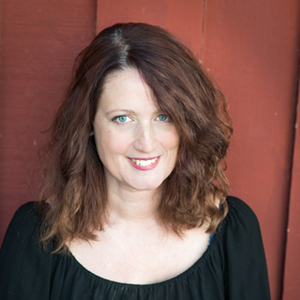Moving research news beyond academia

Hardy’s workshop shows researchers how to get their work published in mainstream media
Have you ever read a news story that you knew, as a researcher, contained inaccurate information? Or have you made an important discovery in your field that you wish would be available to the general public?
Getting your scientific work published in the mainstream media for everyone to learn from can be challenging as a researcher—especially when you are accustomed to writing for experts in your field who know all of your acronyms and jargon.
Lisa J. Hardy, associate professor in Northern Arizona University’s Department of Anthropology, created a workshop, “Media, Medicine and Your Research in the News,” to equip her colleagues and fellow researchers with the tools, structure and confidence to get their research published for the general public.
Her workshop is now available to everyone for free on the RCC pre-recorded workshops —just in time to watch during summer break.
Moving beyond peer-reviewed journals
Hardy expanded her expertise in getting published outside of peer-reviewed journals by earning a Media and Medicine Certificate at the Harvard School of Medicine last year. She was able to attend the program through funding from the Southwest Health Equity Research Collaborative’s Research Infrastructure Core (RIC), which has specific support dedicated to NAU faculty external training.
“What I wanted to do was to bring back what I found to NAU and share the wisdom of the certificate program,” Hardy said.
Hardy is the editor-in-chief of the journal, Practicing Anthropology, for The Society for Applied Anthropology. The publication recently devoted its spring 2022 issue to “Writing as a Form of Practice”—a complementary read to accompany her RIC media workshop.
Hardy’s work has already been published in The Conversation, Stat, Vox and other high-level media outlets. She has also recently finished writing a book, Community Engagement Through Collaborative Writing: Storytelling Together,” which will be released later this year.
Why write beyond research journals?
Hardy said that some researchers want to move beyond publishing only in peer-reviewed journals for a variety of reasons such as an interest in justice work, a personal drive to write, a requirement to publish for career advancement, or a love for writing as a creative outlet.
“I think rather than saying there are only two places—journalism and scholarship—we can find where those overlap and how we can contribute to those spaces,” she said. “I think that is very exciting and interesting.”
Hardy also encourages researchers to explore ways that their work can be turned into creative non-fiction, podcasts, audio diaries, children’s books, poetry, art, music, or a variety of other media.
“There are so many ways to translate research into stories,” Hardy said.
She recommends that researchers try op-ed, or guest essay writing as a way to discuss research discoveries with a wider audience.
“This is an area where we can take gems of our research before we’ve done the full two years of research and we can say, ‘Oh there is something really cool here [before finding the results],’” she said.
Advice on writing for researchers
Hardy said that to have a story published in the mainstream media, there are two things that editors look for—the researcher’s expertise and ability to write. She recommended that researchers first create a website that includes a blog and any personal writing clips researchers accumulate.
She suggested that before researchers submit a pitch, or story idea, to an editor, they first go through the journal or outlet and scan for the voice.
“Get in the groove of who your audience is,” Hardy said.
She also encouraged researchers to review the publication’s guidelines.
“You definitely want to follow those instructions,” she said.
To submit a pitch, Hardy recommended:
- First paragraph—give the editor a clear sense of what you want to write.
- Second paragraph—write a ”nut” graph; a short, succinct and to the point of the pitch, focusing on the importance of your research.
- Third paragraph—describe your qualifications and personal experiences.
“The third paragraph is where we shine as researchers,” Hardy said.
She said that with some online outlets, you may not hear anything back.
“You will probably get a lot of rejections—everybody does,” Hardy said. “It is totally fine, but keep working.”
Hardy said that when researchers attempt a new form of writing, they often focus on whether people will read their work, and if it will encourage the readers to make a change in their behavior.
“What I like to think about is pushing the needle on conversations where people aren’t necessarily going to say, ‘Someone forwarded me an article on health equity last February, and my life was changed. That is probably not going to happen,” she said.
“What can happen is someone forwards an article, and then someone else forwards an article, then someone hears a story, and then [the person finally] listens,” she added, “people can reach beyond the inundation and cacophony of voices and move toward finding different ways of looking at the world.”
To watch Hardy’s workshop or any previous RIC workshop, visit the RCC pre-recorded workshop page.
This research was supported in part by a NIMHD center grant to the Southwest Health Equity Research Collaborative at Northern Arizona University (U54MD012388).